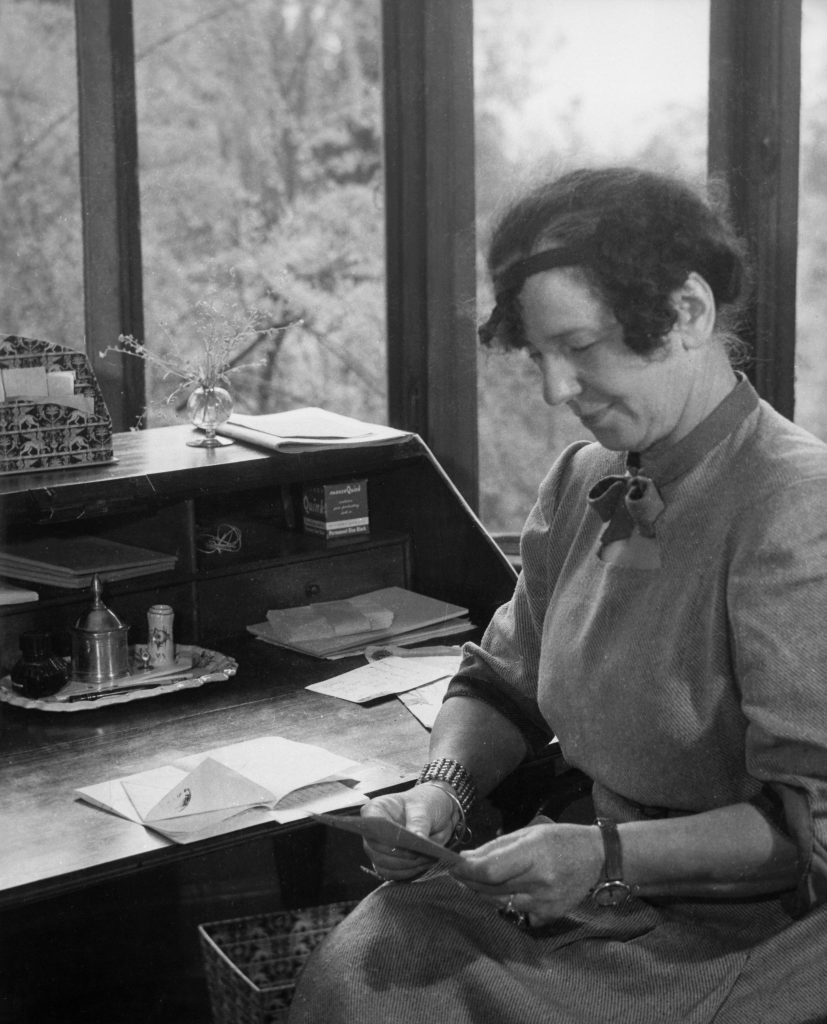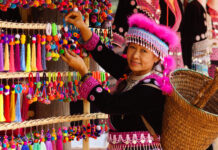One woman’s feminine influence on the Arab World
Text Sophie Ibbotson
“The tourist travels in his own atmosphere like a snail in his shell and stands, as it were, on his own perambulating doorstep to look at the continents of the world. But if you discard all this, and sally forth with a leisurely and blank mind, there is no knowing what may not happen to you.”
You should be careful which books you give your daughters, because you never know what irrepressible, adventurous spirit they might engender. For Freya Stark (1893–1993), the desire to escape and explore was sown on her ninth birthday when she was given One Thousand and One Nights, the famous collection of Arabian tales.
Stark’s Early Childhood
The child of Bohemian painters, she spent her early years dragged around rural Europe before her mother became enamoured with an Italian Count, following him to Italy. A freak accident in the Count’s carpet factory – Stark’s hair became caught in a piece of machinery and it was ripped off, along with an ear and part of her scalp – left the teenager seriously disfigured. Her chances of making a good marriage match quashed, she resigned herself to being her mother’s carer and companion.
Stark’s early years equipped her with an aptitude for languages. In spite of receiving no formal education, she spoke English, Italian and German as well as Latin. In her late thirties, a Professor suggested Stark take up Arabic. It was shortly after the first world war when the Middle East was in flux that Stark became desperate for any opportunity which might allow her to leave her life of drudgery in Italy behind. When her sister, Vera, died from a miscarriage in 1926, Stark concluded that her true cause of death was that she had let other people decide how she would live. Stark was not going to make the same mistake.
First Forays Abroad
And so, in 1927 at the age of 34, Stark boarded a cargo ship bound for Beirut, with scant funds in her pocket. For the first time in her life, she could come and go as she pleased. Everywhere seemed bursting with possibilities.
In the 1920s, the Middle East was a mess. The Ottoman Empire had collapsed and Britain and France held a series of officially temporary mandates, which showed little sign of giving way to the independent states which the Arabs had been promised. Many of the Bedouin tribes had been brutally suppressed and their territories were governed by martial law. None of this fazed Stark. If anything, it made her more curious.
Setting out from Damascus on a donkey accompanied by an English lady friend and a Druze guide, Stark ventured straight into these forbidden lands. She prided herself on travelling light – three baggage mules, two tents and three servants – and taking rough routes through the countryside. When Stark did run into French Army officers, she lied through her teeth, claiming to have been misdirected by her Thomas Cook guidebook. Likewise, whilst temporarily imprisoned as a suspected spy, she charmed her French keepers into accompanying her on horse rides and local sightseeing trips, and to join her for dinner.

Roaming the Middle East
Stark roamed Syria, Lebanon, Iraq, Persia and Arabia for the next 12 years. She did not travel with an official purpose, nor with the professional training of an archaeologist or surveyor, but nevertheless had acute observational skills and wrote vivid accounts of her discoveries. Her perilous journeys through the Elburz mountains of Iran were recorded in The Valley of the Assassins; and other Persian Tales (1934) where she rediscovered the ancient port of Cana and mapped the castle at Alamut. She was also the first European woman to travel in Luristan in modern-day Iran; and if it weren’t for falling ill and having to be airlifted to Aden in Yemen, she would also have been the first explorer to reach the ruins of Shabwa.
Stark’s writings brought her to the attention of the Royal Geographical Society in London, and readers eagerly awaited the latest instalment of her adventures. Like Lawrence of Arabia and Gertrude Bell before her, Stark had captivated public imagination with her stories of the mythical east. Wherever she went, she was the most popular of dinner guests, and so built up a formidable network of contacts, with expat officers and administrators, local rulers and their wives.
Unlike her male counterparts, Stark had unrestricted access to the harems of her Arab hosts. She recognised that this was often where the power lay, and that if she wanted to find out information or to exert influence, this could be done with ruthless efficiency by building rapport with the women.
Military Contribution
With the outbreak of the second world war, Stark joined the Ministry of Information, using her Arabic skills to counter Nazi propaganda in the Middle East. She made impassioned broadcasts from Aden and also led a one-woman film campaign, smuggling film reels into the ministerial harems of Yemen. When challenged about her projector on one occasion, she declared it was a portable ladies’ commode and no further enquiries were made. The women were enthralled by Stark and her films as were their husbands, and she is credited with single-handedly ensuring the neutrality of Yemen throughout the war.
This was not Stark’s only significant wartime contribution, however. Closely copying the structure of the militant Muslim Brotherhood, already the bane of British administrators, Stark created the Ikwan al-Hurriyah, the Brotherhood of Freedom. This network of British sympathisers swelled to 40,000 members and helped to sustain Arab and Egyptian loyalty to the Allies. With Stark at their helm, they espoused the values of freedom and secular democracy at tea parties, social gatherings, discussion groups, public lectures and through the radio. Very much a woman of the people, Stark had the ability to bring together everyone from street sweepers to army officers and friendly British operatives to Bedouin chiefs. As far away as the US, the popular press revered her quite rightly, as “the female Lawrence of Arabia”.
In fact, Stark was more than a female T.E. Lawrence. Her areas of interest – from the Mediterranean to Afghanistan and everywhere in between were far wider, plus she wrote prolifically. The relationships she established were more enduring and while Lawrence’s advice on how to manage the Middle East was respectfully ignored, Stark’s initiatives became a key part of Allied policy for the duration of the war. Stark was, right until her death at the age of 100, not only a passionate nomad, but a bold and influential one, too.
For more stories and photos, check out Asian Geographic Issue 118.











